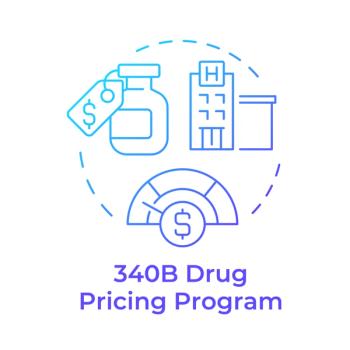
COVID-19 Utilization Declines: The Top Red Flags for Payers and Providers
The COVID-19 pandemic in the U.S. has led to a significant drop in medical procedures as a result of individual and organizational precautions. This decrease, particularly during the first months of the pandemic, has and will continue to have severe implications for plans, providers, and patients.
The COVID-19 pandemic in the United States has led to a significant
Although procedural utilization returned to pre-COVID volumes over the summer, the U.S. now faces another COVID-19 surge, with the virus infecting more than
Recognizing where procedural deficits lie, and which procedural groups are suffering the greatest drops in volume, will help plans and providers determine how to navigate possible future waves of the pandemic and where to direct future outreach to mitigate the negative effects of utilization declines.
Procedural declines: At-a-glance
An analysis of monthly procedure volumes from a medical claims dataset from a commercial health plan with more than 1 million members, indicates a significant difference between procedural volume during COVID surges versus during the same period in the year prior.
For the selected commercial population, the monthly procedural volume fell by about 50% in April 2020 before returning to 2019 levels in June 2020. There was a lesser impact on overall medical spending, with a 34% drop in April. Spending recovered to 100% of the previous year’s level in June. In April of 2020 alone, this represents a deficit of 1.4 million procedures and approximately $200 million.
A second analysis of the claims database on broader
The procedural groups with the smallest changes in utilization in April 2020 included:
- Dialysis (>100% of 2019 volume)
- Pregnancy procedures related to the delivery (88% of 2019 volume)
- Behavioral health therapy and evaluation (>100% of 2019 volume)
- Chemotherapies (100% of 2019 volume)
Conversely, mammograms saw a reduction of approximately 90% in April 2020.
Breast and colorectal cancer screening
Cancer screenings are recommended in regular intervals and are
Despite procedure utilizations returning to normal levels in June 2020, a deficit of approximately 15,000 colonoscopies and more than 40,000 mammograms occurred between January and July compared to the same time period in 2019. This will likely lead to later diagnoses of breast and colon cancers, which will contribute to higher medical costs and worse outcomes.
Cardiac diagnostic procedures
Cardiovascular disease is the
Cardiac procedure utilization fell to 40% of the previous year’s level in April, with the drop in each of the cardiac diagnostic procedure categories ranging between 33% to 50%.
Unlike cancer screenings, which are often performed on asymptomatic patients, cardiac tests are performed on patients with symptoms, or for management of their known medical condition.
The reductions in cardiac diagnostic testing may be due to symptomatic patients not seeking care due to fear of COVID-19, non-urgent assessment or monitoring of a cardiac condition being delayed (e.g. echocardiogram), and possibly, a higher threshold to order tests.
These initial reductions in cardiac testing are consistent with
Similar to consequences likely to arise from the decline in cancer screenings, the decline in cardiac procedures will likely lead to later diagnoses of cardiac problems, which will contribute to higher medical costs and worse outcomes.
Orthopedic procedures
Orthopedic procedural utilizations, such as joint replacements and arthroscopies, dropped 70% to 90% in April compared to the same period in 2019. Unlike diagnostic cancer and cardiac procedures, which can surface potentially fatal conditions in advance, orthopedic procedures are more often conducted to reduce pain and improve mobility and quality of life.
Yet, cancer screening and cardiac diagnostic test volumes only returned to comparable 2019 levels in June 2020, while joint replacements bounced back significantly in June, exceeding the previous year’s figures up to 30%.
The reason behind this disproportionate resurgence in orthopedic procedures is unclear. Given that elective orthopedic surgeries account for
Considerations for payers and providers
Our analysis demonstrates that with some exceptions, most procedural utilizations dropped to their lowest points in April 2020 before recovering to the previous year’s level by June. The magnitude of the utilization reductions varied significantly, with cancer screenings and orthopedic procedures experiencing the largest relative drops compared to 2019.
While it’s unclear how the current COVID-19 surge will impact procedural volumes, plans and providers should anticipate some declines in November and December. In addition, as COVID-19 cases rise across the country and as we enter winter with increasing fatigue towards the virus, it is likely that increased rates of COVID-19 hospitalizations will displace non-COVID-19 utilizations yet again.
In 2021, and particularly after a vaccine is developed, more procedures may follow in the path of orthopedics, with an increase to the number of procedures above what is typical, until the backlog is addressed.
Payers and providers should understand, consider, and engage in more proactive patient care outreach to minimize the real health impacts of deferring procedural utilizations as the COVID-19 pandemic continues on for the foreseeable future.
Authors Jason Bae, MD, MBA, and Alex Dominguez, BSE, are executives of Prealize Health, which uses machine learning to help plans and providers transform healthcare from reactive to proactive. Bae is Medical Director at Prealize Health and a board-certified internist and practices outpatient medicine at Palo Alto Medical Foundation. Dominguez is a Healthcare Data Analyst at Prealize Health. He leads projects in clinical analytic product development and experimentation, and has been instrumental in developing Prealize’s Clinical Impactability and Case Selection algorithms.
Newsletter
Get the latest industry news, event updates, and more from Managed healthcare Executive.






















































